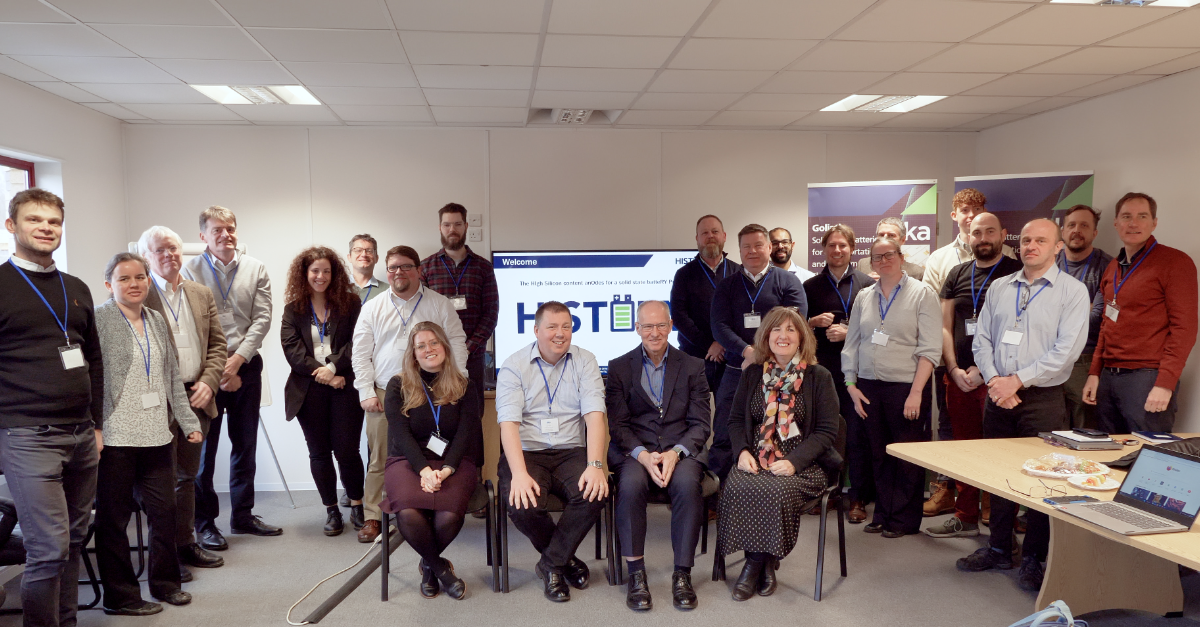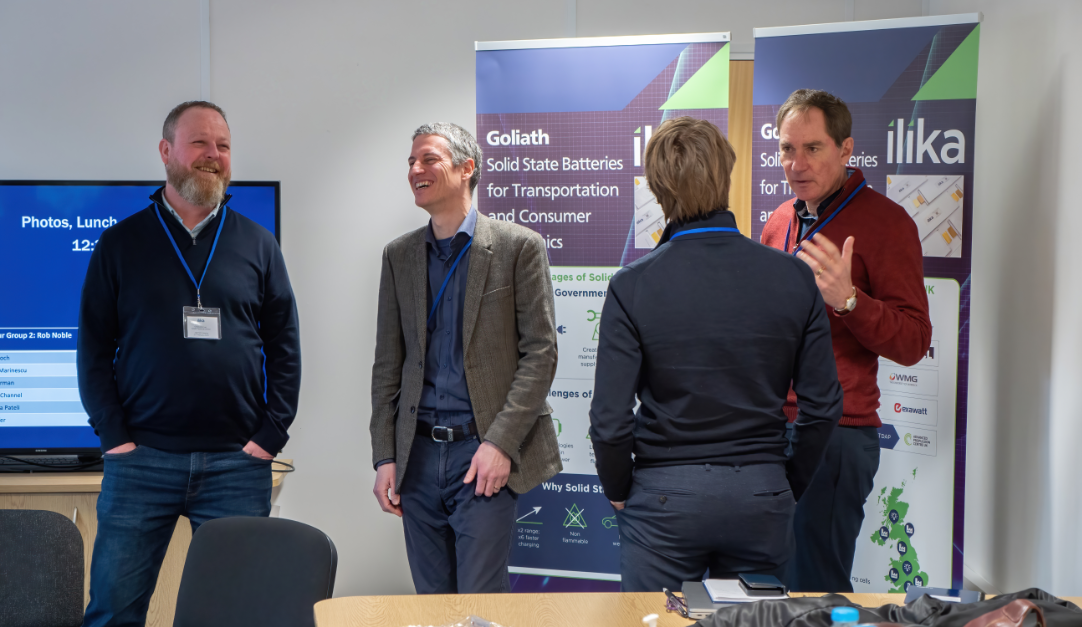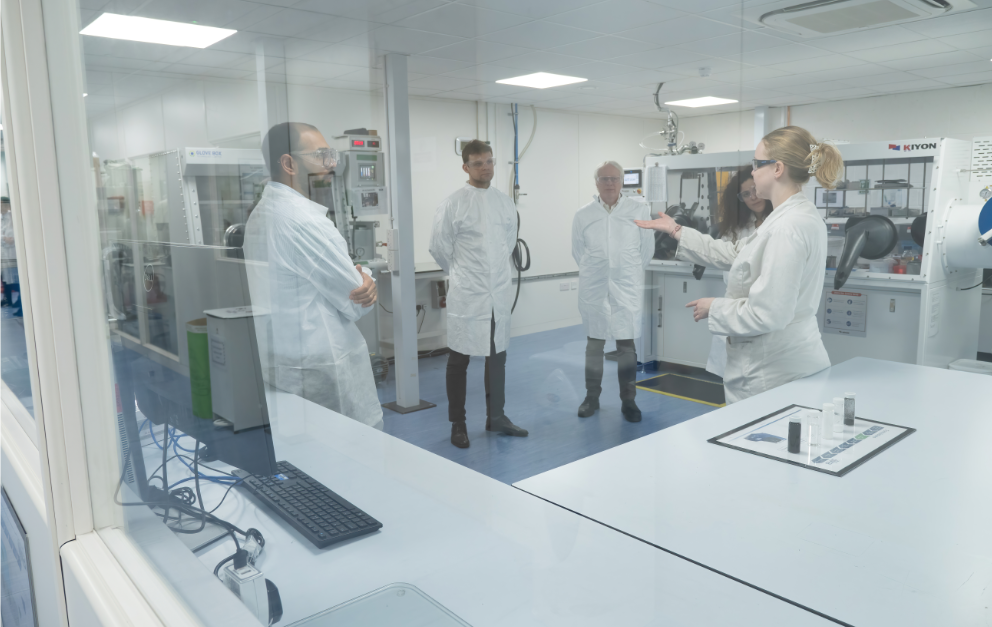Making HISTORY in the Electric Vehicle Battery Market
Posted on: in Blog
In January, we announced we are leading a 24-month £8.2M Faraday Battery Challenge collaboration programme to integrate high silicon content electrodes into our Goliath solid state batteries to enable automotive level performance. The kick-off meeting for project HISTORY took place on February 27th at Ilika’s headquarters in Southampton, UK. Along with Ilika, also in attendance were team members from Nexeon, HSSMI, CPI, University College London, University of St Andrews and Imperial College London, as well as our monitoring service provider, MSP (previously known as “monitoring officers”) and members of Innovate UK.

The meeting was in part an opportunity for all partners to physically meet in the same place and start this 24-month collaborative project with a common understanding. After all, we are going to spend a lot of time working together in the next 2 years.

The morning session concentrated on planning, operations and working principles. The aim of the project is to deliver a solid state battery (SSB) cell for the EV market by integrating a high silicon content anode to enable automotive level performance. The program is split into 9 Work Packages, including 8 technical WP and one dedicated to project management, exploitation and communications. Each WP is led by one of the partners, who presented the deliverables, milestones, risks, mitigations and generally the work involved. In summary, Ilika will design and fabricate the SSB cell following its ‘Goliath’ development program; Nexeon will develop a high silicon content electrode based on its low expansion NSP-2 material to be used in the anode of the SSB cell; HSSMI will deliver an SSB End of Life and Life Cycle Analysis; CPI will formulate inks with the silicon powders; University of St Andrews will characterise interface and materials interactions; University College London and Imperial College London will develop a modelling framework that can predict the electro-chemo-mechanical behaviour and failure of cells and battery stacks for selected anode materials.

After lunch and a group photo opportunity, Ilika gave the partners a tour of the Goliath facilities. Each quarterly meeting, including this kick-off meeting, will take place at one of the partners facilities, which is a great opportunity to explore the partners labs and manufacturing or testing equipment and meet the scientists and engineers that work there. The next one will be at Nexeon’s facilities in May 2023.
In the afternoon, our MSP took centre stage, explaining operational working principles and focusing on how their role is to facilitate and enable this project to succeed. Success will be judged at a technical level but also in terms of exploitation, be it commercial or academic. There will be a lot of communications: be sure to follow up this blog series to learn more about the HISTORY project.
